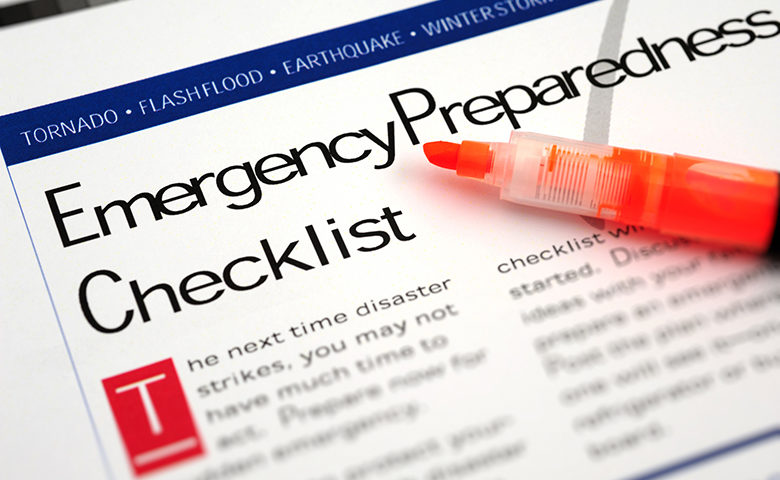Planning for emergencies in a workplace is a must. EHS professionals need to consider many issues when planning effective emergency responses, evacuation procedures and other safety protocols.
According to the U.S. Department of Homeland Security (DHS), fires and floods are the most common reasons for evacuations in the U.S. each year. But there are many other reasons that could cause a workplace to require emergency actions, ranging from natural disasters to chemical spills and violence.
There are also situations when workers might have to shelter-in-place. Understanding emergency situations and planning for all scenarios can be a huge help when emotions are running high and when people panic.
Those in charge who don’t know where to begin might want to take a look at the general OSHA requirements for emergencies, but below are some points to remember when addressing emergency response.
Exit routes:
- Design permanent exit routes that are adequate for the number of employees and the size of the building, and ensure that they meet width and height requirements.
- Exit routes must always be available, free of obstructions and maintained.
- The direction of exit routes must be clear through the use of signs, which should meet the required letter height and illumination specifications (6 inches and 54 lux respectively).
- Materials used for the exit routes and signage should have the required fire resistance rating and be regularly maintained.
Medical services and first aid:
- Give adequate training to the staff responsible for providing first aid.
- If there is no medical facility close to the workplace, ensure that first aid supplies are available.
- Provide suitable facilities for immediate emergency use if there is a probable need for these facilities.
Portable fire extinguishers:
- Purchase the right number and class of approved fire extinguishers for the workplace.
- Mount them in easily accessible areas, ensure that they are clearly visible and an appropriate number is available to all workers.
- Maintain the fire extinguishers.
- If fire extinguishers are available for employee use, provide a training program and regular refreshers.
Alarm systems:
- Alarm systems must be installed, operable, and in compliance with OSHA standards. Only approved components can be used for alarm systems.
- Test alarms regularly.
- Establish procedures and train employees. They need to know what each alarm type means (if there is more than one), and when and how to sound an alarm and notify emergency personnel.
- Specific requirements may apply if the workplace has 10 or fewer employees, or if the alarms serve more than one purpose.
When planning for emergency response, those in charge must also remember to design emergency action plans and fire prevention plans that consider and identify all possible emergency scenarios and all major workplace fire hazards, respectively.
Plans for addressing the identified risks should be put in writing (unless the company has 10 or fewer employees, in which case the plan may be communicated orally). These plans must include a chain of command in the event of an emergency and need to be shared with all employees and periodically updated.
When preparing for emergencies, organizations mustn’t ignore training that’s specific to the equipment employees are expected to use in these emergencies. Additional and regular training must also be provided to those who are expected to assist in the event of an evacuation. After all, responsibilities shift, procedures change, equipment gets updated, people leave the company and new employees are hired. It can be easy to let something slip through the cracks, and that could result in people not knowing what to do in an emergency.
In order for emergency actions to occur smoothly and without hesitation, everyone needs to be trained on what to do and how to handle the human factors that arise in these situations. Employers should provide thorough training to new employees and regular yearly refreshers thereafter. This, in addition to emergency action plans and emergency equipment, can make a difference between a swift and orderly response and panicked confusion.

